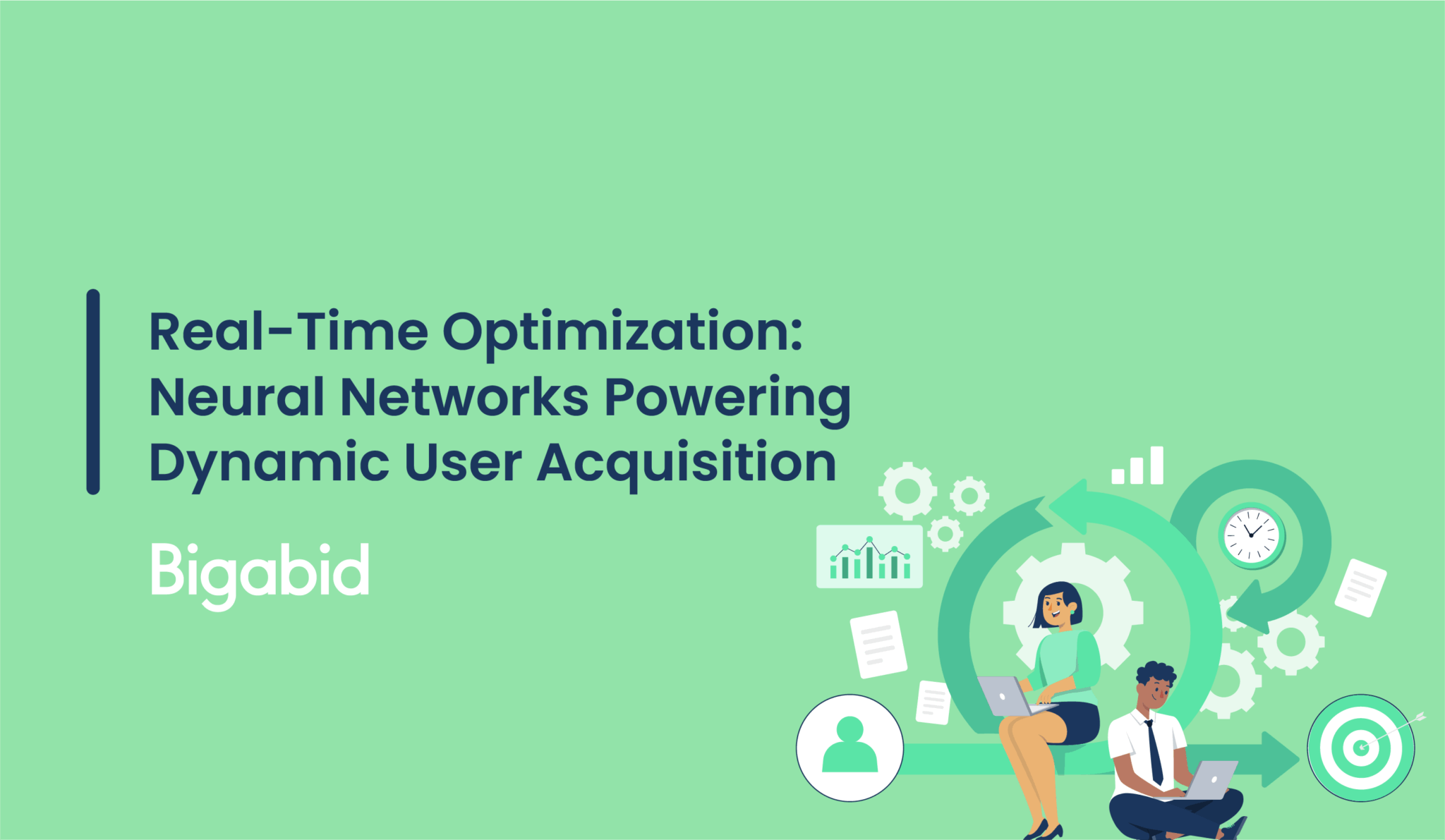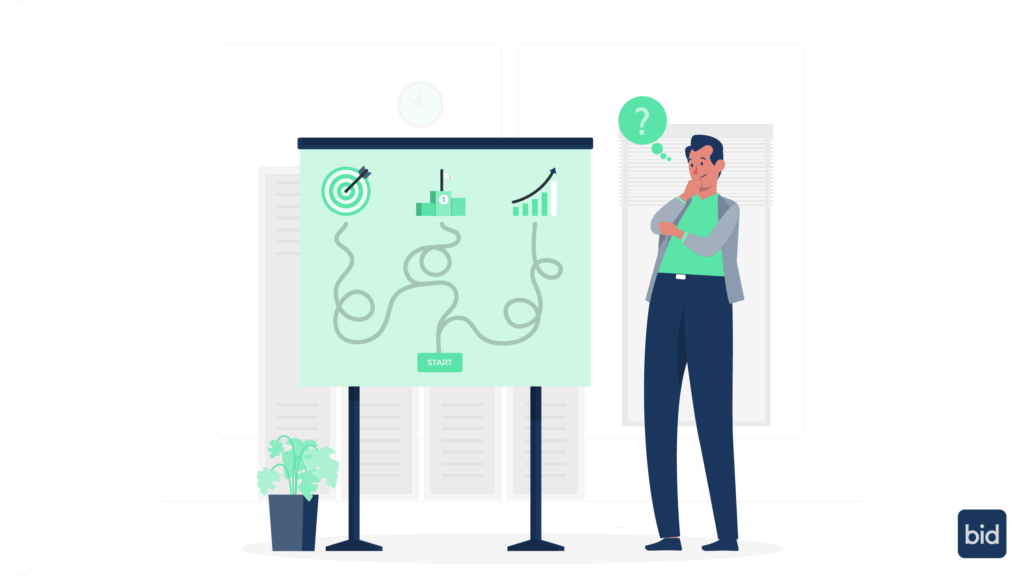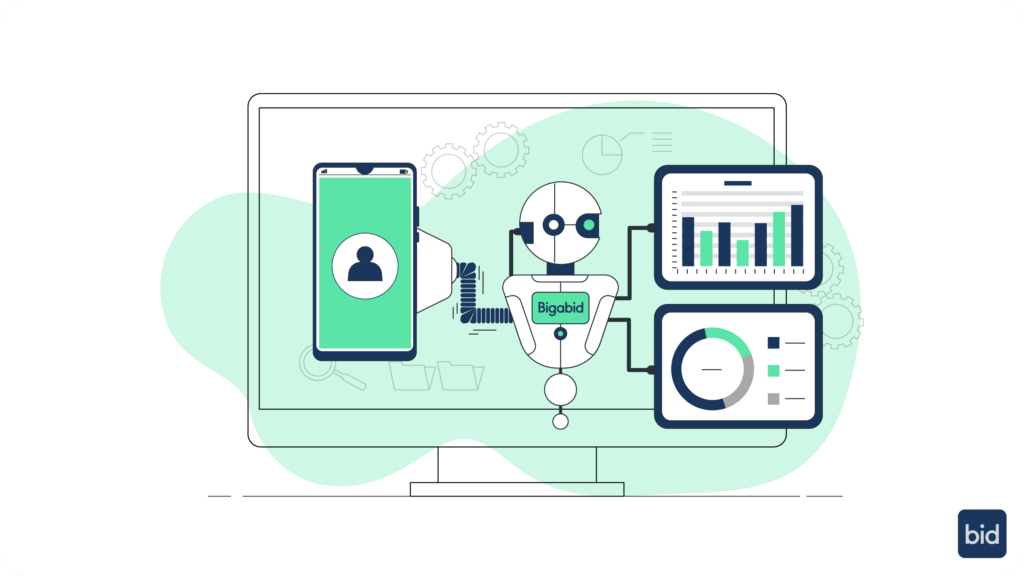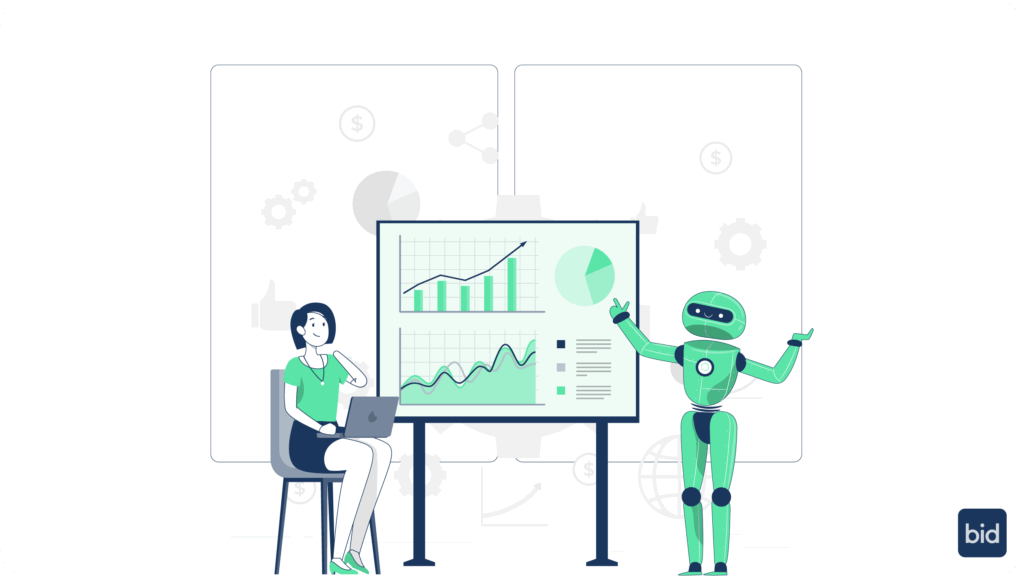
If there’s one truth in the mobile marketing world today, it’s this: the pace of change has never been faster. User behaviors shift overnight, privacy regulations evolve constantly, and the competition for attention — and budget — is fierce.
For years, user acquisition (UA) strategies relied on fairly rigid approaches: static audience segments, pre-scheduled campaigns, and periodic optimization. These methods worked — until they didn’t.
As mobile ecosystems have matured, marketers have discovered that static approaches simply can’t keep up. The answer isn’t just more data. It’s real-time data, interpreted and acted upon by intelligent systems that learn and adapt on the fly.
At Bigabid, we believe real-time optimization isn’t just an upgrade — it’s the future of high-performance mobile user acquisition. And at the heart of that future? Neural networks.

The Problem with Static User Acquisition
Let’s be blunt: mobile UA has a problem. For years, campaigns were built around:
This made sense when data was limited, and computational power was expensive. But today, these methods leave huge opportunities on the table.
Why? Because users are constantly changing.
A user who looked like a low-value prospect yesterday might show subtle behavioral signals today suggesting they’re ready to convert — but static systems won’t notice until it’s too late. Meanwhile, budgets get wasted showing ads to users who’ve lost interest or churned silently.
Marketers can’t afford to guess who’s ready to engage. Not in today’s markets, where competition is just a tap away.

Real-Time Data: The Fuel for Dynamic UA
Real-time optimization starts with one thing: real-time data.
This isn’t merely about having a lot of data — it’s about having fast, fresh data that reflects user behavior as it’s happening.
Consider just a few of the signals generated every second:
In modern mobile ecosystems, platforms like Kafka or Spark Streaming make it possible to process these torrents of data in milliseconds. But raw data alone doesn’t solve the problem.
What matters is turning that data into decisions. And that’s where neural networks come in.
Bringing Real-Time Data to Life
For example, imagine a user browsing a mobile game late at night. The timestamp alone can signal higher purchase intent, as users are often more relaxed and impulsive during off-hours. Or consider micro-interactions, like how quickly a user scrolls through an app’s content. Faster scrolls might indicate lower engagement, while slower, deliberate taps suggest curiosity. These subtle signals, processed in real time, let neural networks identify the perfect moment to serve a retargeting ad—or hold back to avoid annoying the user.
At Bigabid, we believe the future belongs to marketers who can read these subtle signals and respond instantly.

Neural Networks: Learning Complex Patterns at Scale
It’s tempting to think of AI as some mysterious black box. But at its core, a neural network is simply a tool for recognizing complex patterns.
Unlike traditional models, which look for straightforward correlations (“users who buy X often buy Y”), neural networks can capture highly nonlinear relationships buried in mountains of data.
For instance:
These connections are often invisible to human analysts or simple statistical models. But neural networks, trained on billions of data points, see the invisible.
Why Neural Networks Outperform Traditional Models
Traditional models like logistic regression or decision trees are powerful but often rely on linear assumptions and simple feature combinations. They’re fast and explainable—but can miss complex interactions hidden in high-dimensional data.
Neural networks, on the other hand, excel at capturing subtle nonlinear relationships and interactions between dozens—or even thousands—of features simultaneously. This means they can identify patterns that older models simply can’t detect, unlocking smarter bidding strategies and personalized creative decisions. For mobile UA, this difference can make or break a campaign’s ROI.

How Neural Networks Enable Dynamic User Acquisition
So how does this all come together in practice? Let’s break down how neural networks transform user acquisition into a real-time, dynamic engine.
Traditional UA models often rely on historical snapshots. Neural networks, by contrast, learn continuously.
As new user signals arrive, the network updates its understanding:
Because the system is dynamic, it can adjust campaigns in near real time, rather than waiting for a weekly analysis.
Neural networks don’t simply label users as “high value” or “low value.” They generate nuanced probability scores:
These scores feed directly into bidding algorithms, ensuring every impression and dollar spent is calculated for maximum ROI.
Neural networks also power creative personalization.
Instead of showing generic ads, the system dynamically selects:
One user might respond to bold visual storytelling. Another prefers minimalism. A neural network can detect these patterns — sometimes from surprisingly subtle signals.
Every millisecond counts in mobile advertising auctions. Neural networks analyze:
…and adjust bids moment by moment.
This precision ensures that budget isn’t wasted chasing low-probability users and that valuable impressions aren’t missed because bids were too low.

Real Results: The Impact on Performance
Neural-powered UA isn’t theoretical—it’s delivering measurable results.
At Bigabid, we’ve seen how real-time neural optimization transforms outcomes for our partners, helping to:
These gains stem from applying advanced machine learning to every layer of the user acquisition process. It’s not magic—it’s math.
Challenges & Considerations
It’s important to acknowledge: real-time neural optimization isn’t plug-and-play.
Another challenge is model explainability. While neural networks can produce highly accurate predictions, they’re often criticized as “black boxes.” Marketers and compliance teams alike may demand clarity about why certain users were targeted or why bids were adjusted in specific ways. Addressing this requires advanced interpretability tools and ongoing collaboration between data scientists and business stakeholders. At Bigabid, we place significant emphasis on demystifying these models so clients understand both the power—and the limits—of the technology.
At Bigabid, we invest heavily in proprietary frameworks, continuous optimization, and stringent privacy safeguards. Our goal is to deliver advanced solutions without sacrificing transparency or compliance.

Looking Ahead: The Future of Neural UA
The frontier is still expanding. We see exciting developments on the horizon:
We’re also exploring how generative AI can craft entirely new creative assets tailored to micro-segments in real time. Imagine neural networks producing personalized videos or copy variations, seamlessly adapting campaigns for niche audiences—all while maintaining brand consistency and compliance. The possibilities for mobile marketers are immense.
In short: the science is evolving fast — and so are the opportunities for mobile marketers willing to embrace it.

Why Neural Networks Are the Key to Dynamic UA
User acquisition is no longer a guessing game. Real-time optimization powered by neural networks is changing the rules.
At Bigabid, we’re driven by the belief that science should fuel marketing — not the other way around. And we’re committed to helping partners unlock the true potential of real-time neural optimization.
Real-time neural optimization is transforming how mobile marketers acquire and engage users. Let Bigabid’s advanced UA and retargeting solutions help you move faster, spend smarter, and scale bigger.
Contact us today to explore how we can fuel your app’s success.